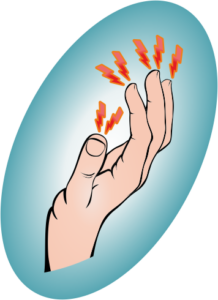Skin sensations
The skin that covers my body is the largest organ I have. Human skin is porous and functions as a bidirectional membrane. Contrary to some animals, I can’t exchange Oxygen and Carbon-diOxide through my skin. Instead, my skin has external touch receptors, which feed my brain information on physical contact.
A random fly landing on my body or a hair touching my skin are examples of gentle external touch sensations. Sometimes similar sensations arise without any external stimulation. When sitting with closed eyes, it isn’t easy for me to distinguish if the cause is internal or external. When holding or accelerating my breathing for a long while, bloodstream gasses swing out of balance, and these swings may trigger skin sensations.
I can manipulate my breathing to feel a temperature change. For example, when holding my breath and entering my discomfort zone, I usually sense a rise in skin temperature. Similarly, I may feel tingling in my skin or other ‘funny’ effects when hyperventilating. Knowing the sensations breath holding and hyperventilating trigger in my skin, I can get essential indications of my breathing.
For example, when practicing an exercise that involves intensive breathing, I use the tingling that follows hyperventilation to know when to stop the exercise.

